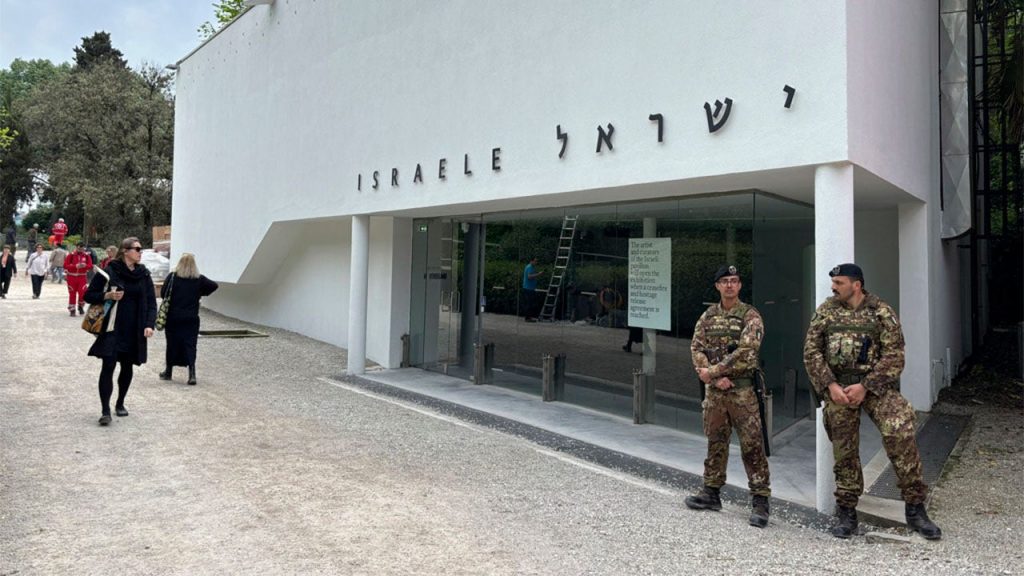The artist representing Israel at this year’s Venice Biennale in Italy, along with its curators, have decided not to open the Israeli pavilion until a cease-fire and hostage deal are reached in Israel’s ongoing conflict with Hamas in the Gaza Strip. A sign on the window of the pavilion stated that the exhibition would open when such an agreement is reached. The artist, Ruth Patir, and the curators expressed solidarity with the families of the hostages and with those in Israel who are calling for change. While Patir objected to cultural boycotts, she found it difficult to present a project about life’s vulnerability during a time of disregard for it.
Israel is one of 88 national participants in the Venice Biennale, a prestigious contemporary art show that runs from April 20 to November 24. The Israeli pavilion, established in 1952, is among the national representations housed within the Giardini, a historic venue for the Biennale. Despite calls to exclude the Israeli pavilion from this year’s show in protest of Israel’s actions in Gaza, Italy’s culture minister supported Israel’s participation. Security measures were heightened ahead of the opening, with those opposed to Israel’s presence planning protests on-site.
National pavilions at the Venice Biennale operate independently of the main show, with each country deciding its own exhibit. Patir’s Israeli exhibit, “(M)otherland,” was curated by Mira Lapidot and Tamar Margalit. They announced the delay in opening the exhibit due to the ongoing conflict in Gaza, expressing hope that conditions would change to allow the pavilion to open. As of now, a video work by Patir can be viewed through the pavilion window. The exhibit was scheduled to run from April 20 to November 24.
While some critics had already signed an open letter calling for the exclusion of the Israeli pavilion from this year’s Biennale, others questioned the decision, highlighting the pavilion’s independence from the main event. Patir’s decision to delay the opening in solidarity with those affected by the conflict reflects the complexity of showcasing art in a politically charged environment. Ultimately, the decision underscores the intersection of art, politics, and activism in a setting that traditionally celebrates cultural exchange and dialogue.


